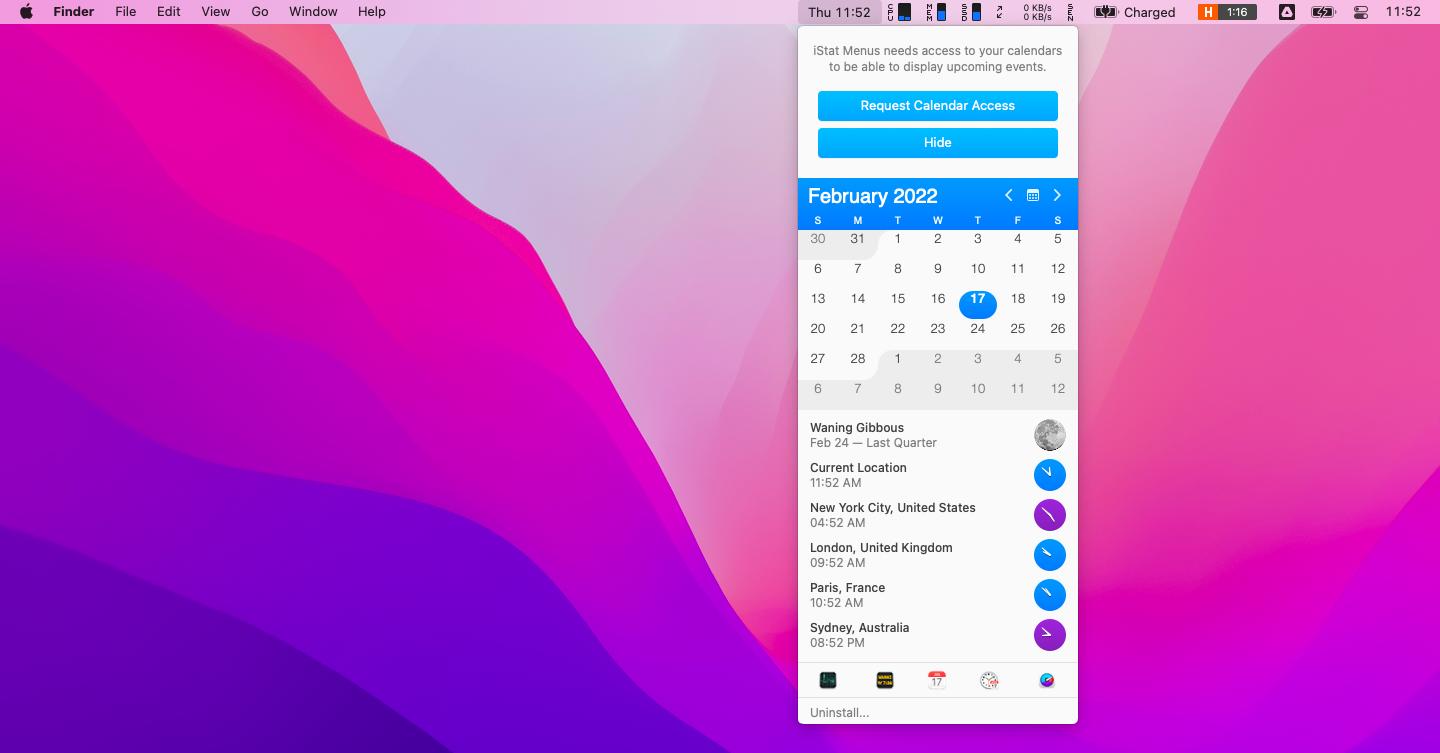How to fix "Safari can't establish a secure connection" on Mac
In many ways, Safari is the center of Apple’s ecosystem of devices. Whether you use a Mac, iPhone, or iPad, going online is probably your primary activity, and it’s most commonly done through Safari.
Overall, Safari is an excellent browser. Due to its integration with the operating system, it’s not too taxing on your devices. It’s also pretty fast, features an intuitive interface, and offers plenty of privacy protections.
Safari today warns you if you visit a fraudulent website, prevents cross-site tracking by default, deletes unused cookies in 30 days, and even hides your IP address thanks to the new (paid) feature called Private Relay.
As is the case with all other apps, however, Safari does malfunction from time to time. In particular, Safari is set not to load websites that are unsecured, showing this error message “Safari can t establish a secure connection to the server.” But if Safari doesn’t load a website by mistake, there might be other reasons that require a quick investigation.

Why Safari can’t establish a secure connection to the server
There might be a few reasons for why Safari can’t open a particular page online. Every time you load a URL, Safari checks that the data on the other end is valid and secure.
Unsecured websites might impersonate real websites to get your personal information, intercept your data in transit, or even contain malware.
That’s why Safari would show you a warning message and, in some cases, completely prevent you from accessing the website.
You might find unsecured websites by the http:// that precedes their domain name (e.g. http://setapp.com). All properly configured secure websites should automatically redirect to https:// (e.g. https://setapp.com). If they don’t, that might mean they are not completely secure.
Safari also gives you another visual clue with regards to website security — a padlock icon next to the URL. A gray padlock icon means that the website is secure and encrypted. A green icon means that the website has acquired an even more extensive SSL (secure sockets layer) certificate. All unsecured websites will say “Not Secure” before the domain name.
However, there are some other instances where Safari might block websites as well:
- URL could be misspelled
- Date and time might be set incorrectly
- DNS server records might be mixed up
- A malicious scripts could be detected
- An SSL certificate might not be installed properly
- An IPv6 protocol might not be working correctly
The first thing you should do when you get the “Safari can’t find server” error is check the state of your internet connection with apps like WiFi Explorer and NetSpot.
WiFi Explorer is one of the best and most accurate network analyzers for Mac. This utility instantly gives you real-time stats to every aspect of your network, from band, range, and signal quality to noise, mode, and channel width. You can even fix most problems yourself by following an extensive help manual in the app.

NetSpot is another great WiFi-troubleshooting solution. While it shows you lots of information that’s similar to WiFi Explorer, such as signal level, noise, security, and more, it really shines when you use it to survey your space and find gaps in WiFi coverage.
To use the Survey feature, switch to the Survey tab, start a new survey, either upload or draw a map of your space, measure the distance between two points, and then walk around checking the strength of the signal in different spots. As a result, you might reposition your WiFi router or buy a WiFi extender to cover your space properly.

Safari can’t establish a secure connection: Fixes
When you get the “this site can’t provide a secure connection” notice from Safari, which subsequently blocks you from entering the website, don’t despair — there’s actually quite a lot you can do to fix the situation (in just a few minutes) if you follow our eight-step guide below.
1. Double check your URL
You might not realize but one of the most common fraudulent activities online is website impersonation. A website pretending to be something else can ask you to log in or enter any other personal information to steal it, or download something to get a malicious script on your Mac.
It’s possible to end up on the wrong website because you mistyped the URL or the top-level domain (e.g. wrote .co instead of .com). It’s also possible to mistype a query in Google and get an impersonating search result, although Google (and other search engines) are trying to weed out such instances.
So make sure to double-check URLs of the websites you visit, and if you visit certain websites often consider adding to your bookmarks to avoid misspellings in the future.
2. Set the correct date and time
One of the most random but nevertheless effective fixes for problems on your Mac is setting date and time to automatic.
Don’t even try to figure out how these things are related, just trust us that sometimes setting the time correctly will fix a lot of issues, including the “Safari cannot establish secure connection” problem.
To set date and time to auto:
- Launch System Preferences ➙ Date & Time
- Click on the padlock icon to make changes and enter your password
- Check “Set date and time automatically”

You might not even necessarily notice that your date and time are set manually rather than automatically. To help you spot inconsistencies, try an app like iStat Menus.
iStat Menus is the most comprehensive Mac monitoring solution. It runs real-time graphs to keep tabs on your CPU, GPU, memory, disk, fans, network, sensors, battery, and even the weather as well as time and date. You can customize the menu bar icons to display just the data you need so it’s always right in front of your eyes.

3. Change to a different DNS server
You might already know that the domain name you put in as a URL isn’t actually what the internet uses to connect to different websites. Instead, all websites have their corresponding IP addresses that look like this 93.184.216.34.
What helps translate domain names into IP addresses is a DNS (domain name system) server. There are a variety of DNS servers available online. It’s likely that by default you’re using the one provided by your ISP.
But if you see that Safari can’t find servers for your website, you can try changing the DNS server. There are, in fact, other reasons why it might be beneficial to do, such as increased loading speed for websites and improved privacy.
To change your default DNS to Cloudflare (known for its privacy and speed):
- Open System Preferences ➙ Network
- Click Advanced
- Navigate to the DNS tab
- Click the plus icon and type 1.1.1.1
- Click plus again and type 1.0.0.1 (for redundancy)
- Also add 2606:4700:4700::1111 and 2606:4700:4700::1001
- Click OK and then Apply

4. Use your antivirus to make sure the site can be trusted
If you decide to proceed with visiting the website, make sure that your Mac has a capable antivirus solution just in case. For all things related to Mac optimization, we recommend CleanMyMac X.
CleanMyMac X is the most advanced optimizer for Mac, helping you speed up your system, get rid of junk, save disk space, protect your privacy, delete and update apps, and scan your Mac for malware.
To see if your Mac contains any malware right now:
- Launch CleanMyMac X
- Go to the Malware Removal tab
- Click Scan
- Remove if anything was found

5. Set the keychain to trust the certificate
When websites get an SSL certificate, it’s possible that they install it incorrectly, or it expires, or they change it to another one but the original remains cached.
In all these cases, Safari might not trust the certificate and refuse to open the website. If you’re sure that all information is correct, you can override Safari’s block by forcing the keychain to trust the certificate.
Here’s how to do it:
- Launch Keychain Access from Utilities
- Go to System ➙ All Items
- Double-click on the website you’re trying to visit
- In the Trust dropdown, select Always Trust

6. Disable IPv6 for your network on Mac
There are two main protocols on the web IPv4 and IPv6. The former is an older protocol that consists of four blocks of digits such as 142.250.189.206. The problem is that there are only a bit over four billion such combinations, which is not enough for all computers that want to connect to the web.
IPv6, however, uses longer addresses with hex digits, such as 2607:f8b0:4005:812::200e, which can support more than enough addresses for everything. The problem is that IPv6 is not yet universally supported, and that might cause the problem with the website you’re trying to visit.
To solve this, set IPv6 configuration to manual:
- Launch System Preferences
- Go to Network ➙ TCP/IP
- In the Configure IPv6 dropdown, select Off

7. Secure your browsing with a VPN
While an SSL certificate in general verifies that our connection to the website is encrypted, there are still lots of websites that are not secure at all.
To ensure that we’re protected at all times, it’s recommended to use a VPN (virtual private network), which will act as an extra layer to keep your browsing private and secure. Among all the VPN clients available today, ClearVPN is a no-brainer option.
ClearVPN is a VPN client for people who don’t even know what a VPN is but want to make sure their Mac’s internet connection remains private. The app has lots of shortcuts for any use case, from changing your geo location to streaming video to changing your IP to restricting malware.
Just open ClearVPN and click on the preset you need. Done!

As you can see, when you encounter the “Safari can’t establish a secure connection to the server” problem, you can go through our list and fix the issue in minutes. Especially if you have apps like WiFi Explorer and NetSpot to check the state of your network, iStat Menus to monitor your system, CleanMyMac to protect you from malware, and ClearVPN to encrypt your connection.
All the apps mentioned above are available to you absolutely free for seven days through the trial of Setapp, a platform with more than 260 Mac and iOS apps for any scenario imaginable. Try every Setapp app at no cost today and save your new collection of favorites.






